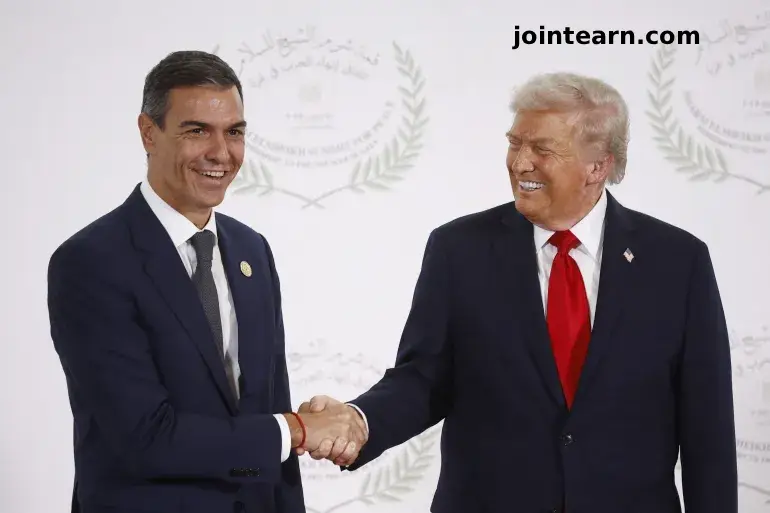
The European Union and Spain have firmly dismissed US President Donald Trump’s recent threats to impose tariffs on Madrid for refusing to meet his proposed NATO defense spending target. The dispute underscores ongoing tensions between Washington and its European allies over military contributions and trade policies.
Trump Threatens Tariffs Over NATO Spending
On October 13, 2025, President Trump expressed frustration with Spain for declining to adopt the new NATO guideline of spending 5% of GDP on defense. Speaking at a press conference, Trump said he was “very unhappy” with Spain and suggested that trade penalties could follow.
“I was thinking of giving them trade punishment through tariffs because of what they did, and I think I may do that,” Trump remarked. He had also previously proposed making Spain “pay twice as much” in related trade discussions.
EU and Spain Push Back
The European Commission quickly responded, asserting that trade matters fall under EU jurisdiction. Spokesperson Olof Gill emphasized that Brussels would “respond appropriately, as we always do, to any measures taken against one or more of our member states.”
Gill added that the EU-US trade deal signed in July remains the correct framework for resolving any disputes. Spain’s Economy and Trade Ministry echoed this stance, stating, “The defense spending debate is not about increasing spending for the sake of increasing it, but about responding to real threats. We’re doing our part to develop the necessary capabilities and contribute to the collective defense of our allies.”
Spain’s Defense Spending Record
Despite rejecting the 5% NATO target, Spain has significantly increased its military budget. Nominal defense spending rose from 0.98% of GDP in 2017 to 2% in 2025, totaling approximately €32.7 billion ($38 billion).
Defense Minister Margarita Robles noted that discussions among NATO allies are currently focused on the ongoing security situation in Ukraine, not long-term targets for 2035. While Spain has no immediate plans to change its position, officials did not completely rule out adjustments in the future.
Potential US Measures Against Spain
While targeted tariffs against individual EU members are uncommon, history shows the US has applied such measures in specific cases. According to Ignacio Garcia Bercero, senior fellow at Brussels-based think tank Bruegel, similar actions occurred in 1999 when the US imposed 100% tariffs on EU products like chocolate, pork, onions, and truffles in retaliation for a ban on hormone-treated beef.
Experts note that the US could target Spanish products under anti-dumping regulations, which could harm Spain’s exports. Juan Carlos Martinez Lazaro, professor at Madrid’s IE Business School, highlighted that Spanish black table olives suffered dramatically under US tariffs imposed in 2018, dropping Spain’s market share from 49% in 2017 to 19% in 2024.
Additionally, proposals have been floated to move US naval and air bases from southern Spain to Morocco, a shift that could impact local economies by eliminating thousands of indirect jobs.
Implications for NATO and EU-US Relations
The current spat between the US and Spain illustrates broader challenges in transatlantic defense cooperation. While the EU continues to uphold collective defense commitments, disagreements over specific spending targets have fueled tensions. Analysts stress that maintaining open dialogue and relying on multilateral agreements like the EU-US trade deal is critical to preventing escalation.
Spain’s firm stance demonstrates its commitment to strategic defense priorities rather than arbitrary spending benchmarks, signaling that it will prioritize security needs over political pressure from Washington.


Leave a Reply